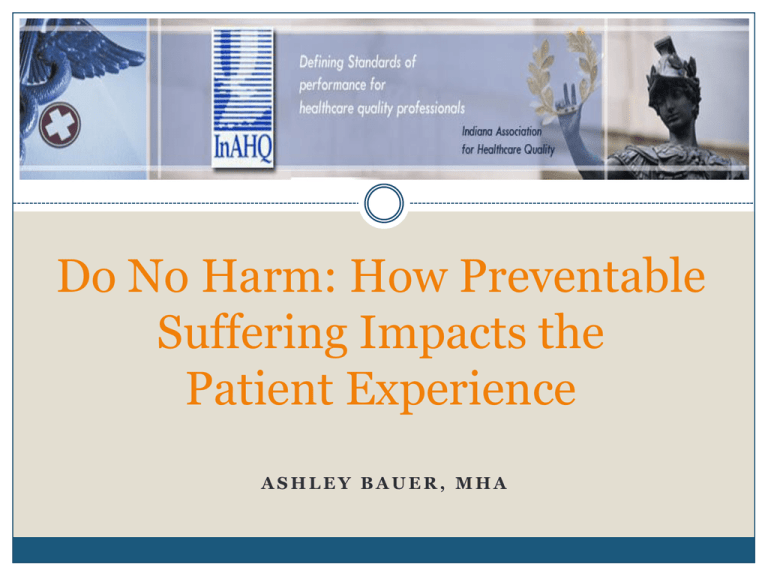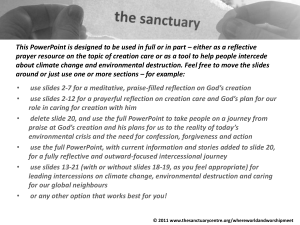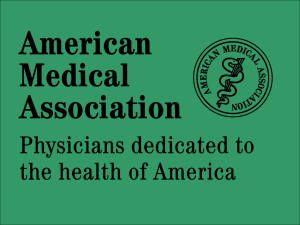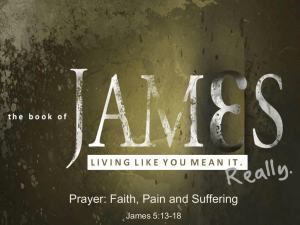How Preventable Suffering Impacts the Patient Experience
advertisement

Do No Harm: How Preventable Suffering Impacts the Patient Experience ASHLEY BAUER, MHA Conflict of Interest Disclosures None Objectives High Level HCAHPS Overview FFY 2016 Questions & Measures Defining and Understanding Preventable Suffering Improve Patient Experiences & Care through Reduced Suffering CAHPS Family of Surveys ® Hospital Consumer Assessment of Healthcare Providers & Systems Produce data for public reporting on the Hospital Compare website Enhance public accountability and transparency Create incentives to improve by linking participation to reimbursement Health Plan CAHPS Hospital CAHPS Home Health Care CAHPS Clinician and Group CAHPS Current Patient Eligibility Client Exclusions: Patients who die while in the hospital Documented “No Publicity” patients Newborns Other patients excluded by law in your state Press Ganey Exclusions: Patients admitted and discharged on the same day Patients under 18 at admission Patients with an ineligible MS-DRG Patients with an international address Patients admitted from or discharged to a correctional facility Patients discharged to hospice care Patients discharged to a nursing home or skilled nursing facility The Survey 4 Scales, Frequency Questions 2 Waves, 6 Weeks Data is Adjusted by CMS Publicly Reported Data www.hospitalcompare.hhs.gov Overview of Value-Based Purchasing Weighting for FFY 2016 25% 10% 25% 40% Clinical Pt Experience Outcomes Efficiency FFY 2016 Performance Period: January 1, 2014-December 31, 2014 FFY 2016 VBP Measures Measures Measure Description AMI Clinical Process of Care (10 @ 10%) AMI-8a, HF-1, PN-3b, SCIP-INF-1, & SCIP-INF-4 Patient Experience (10 @ 25%) Outcome (7 @ 40%) PN PN-6 SCIP SCIP-INF-2, SCIP-INF-3, SCIP-INF-9, SCIP Card-2 & SCIP-VTE-2 IMM IMM-2 Influenza immunization HCAHPS CAUTI Catheter-associated UTI CLABSI Central line associated bloodstream infec AMI AMI 30-Day Mortality Rate HF HF 30-Day Mortality Rate PN PN 30-Day Mortality Rate PSI-90 SSI Efficiency (1 @ 25%) AMI-7a MSPB-1 Complication/patient safety (composite) Surgical site infection (Colon & Abd Hyster) Medicare Spending per Beneficiary Hospitals Subject to Inpatient VBP General acute care hospitals paid by IPPS (inpatient prospective payment system) Excluded Critical Access Hospitals Children’s and Specialty Hospitals Hospitals that lost APU under IQR reporting Base DRG Reimbursement at Risk 2013 - 1% of payment 2014 - 1.25% 2015 - 1.5% 2016 - 1.75% 2017 - 2% Redefine Patient Experience You can’t separate the patient experience from what actually happens to the patient. The patients’ experience includes everything that the patient thinks feels and perceives as a result of anything that touches or impacts them including clinical processes, practices to ensure safety, service delivery and outcomes of care. Integrating these metrics leads to better knowledge of care and a single source of truth for improving careprevents waste of efforts and prevents creating unintended consequences. Reducing Suffering to Improve Performance Redefining the Patient Experience Patient suffering can be thought of in three ways: 1. The unavoidable suffering that the patient brings to a medical experience because of his or her diagnosed condition 2. The unavoidable suffering that can occur as a part of receiving medical treatment for a condition 3. The avoidable suffering or harm that occurs when providers do not provide optimal care Organization leadership should support and engage nursing staff to develop suffering-reduction strategies that can be incorporated into what they do already. Effectively transforming the patient experience requires redefining the concept by expanding what it means and by promoting the understanding that improving the patient experience is about mitigating unavoidable suffering and preventing avoidable suffering. Redefining the Patient Experience Deconstructing Suffering: Sources and Examples Further Refining the Model: Measurement & Action Unavoidable Suffering Variability comes from individual differences in patient needs. Arises from within the individual in response to his/her illness and in reaction to an optimally functioning care delivery system. Unavoidable does not mean un-addressable, though we may not be able to completely eradicate this suffering. Avoidable Suffering Variability comes from differences in how organizations provide care. Arises from the dysfunction present in the care delivery system. Avoidable implies that in an ideal state we would not create this suffering, therefore our goal should be to reduce these defects to zero. Outdated vs. Contemporary View Outdated We need to delight to compete We need to focus on amenities We need to create wows- because we’ve already addressed defects (The above mindset predates transparency of performance) Contemporary We need to understand the defects in the process – there are many Patients are reporting on critical issues: pain control, respect, clarity of communication, education for self care, information re medication We don’t have the right to make care worse for patients (clinically or experientially) – it’s against the mission of healthcare It’s ok to improve amenities to distract patients from their suffering and create a calming environment- but it’s part of a larger strategy- not the whole strategy. Adopting a Contemporary View Respond to Needs to Reduce Suffering Address Fear & Anxiety Reduced fear and anxiety leads to reduced suffering Recognize your routine is not “routine” for the patient Lean & Six Sigma to reduce variability and defect Patient-centered focus Responding to Needs and Preventing Suffering Elements of Suffering Respond to Inherent Patient Needs • • • • • • • • • Promote Confidence in Skill Manage Pain Ensure Safety Inform/Prepare Personalize Care Reduce Fear/Anxiety Protect Privacy Include in Decision/Choice Demonstrate Empathy Prevent Avoidable Suffering • • • • • Lack of Teamwork Lack of Courtesy Unhelpful Staff Unnecessary Wait Difficult/Inefficient Processes • Noisy/Dirty Environment • Inadequate Amenities • Inadequate Service Recovery Reducing Fear & Anxiety • • • • • • Fear Examples Anxiety Examples The unknown Suffering or pain Infection or becoming ill Dying Needles Hospitals • Time, and time constraints • Costs and financial strain • Effects on family/friends • How will they be treated or possibly judged • Forgetting things, or not asking the right questions Work Toward Right Increases Not Reducing Fear & Anxiety Increases Reducing Fear & Anxiety Increases Healing time Trust Likelihood of infection Patient satisfaction Risk of poor outcomes Patient compliance Avoidable suffering Relationship building Patients changing facility/provider Patient loyalty Create Consistent Experiences Your routine is not “routine” for the patient Every day situations for you are major life events for patients and their families Create consistency in processes and practice to eliminate avoidable suffering Adopt Lean & Six Sigma techniques to reduce variability and defect Patient Centered Focus Patient Centered Care Nursing Models Put the patient at the CENTER of everything you do from an administrative, organizational perspective Who does this benefit – us, or the patient? Thank You What questions can I answer?







